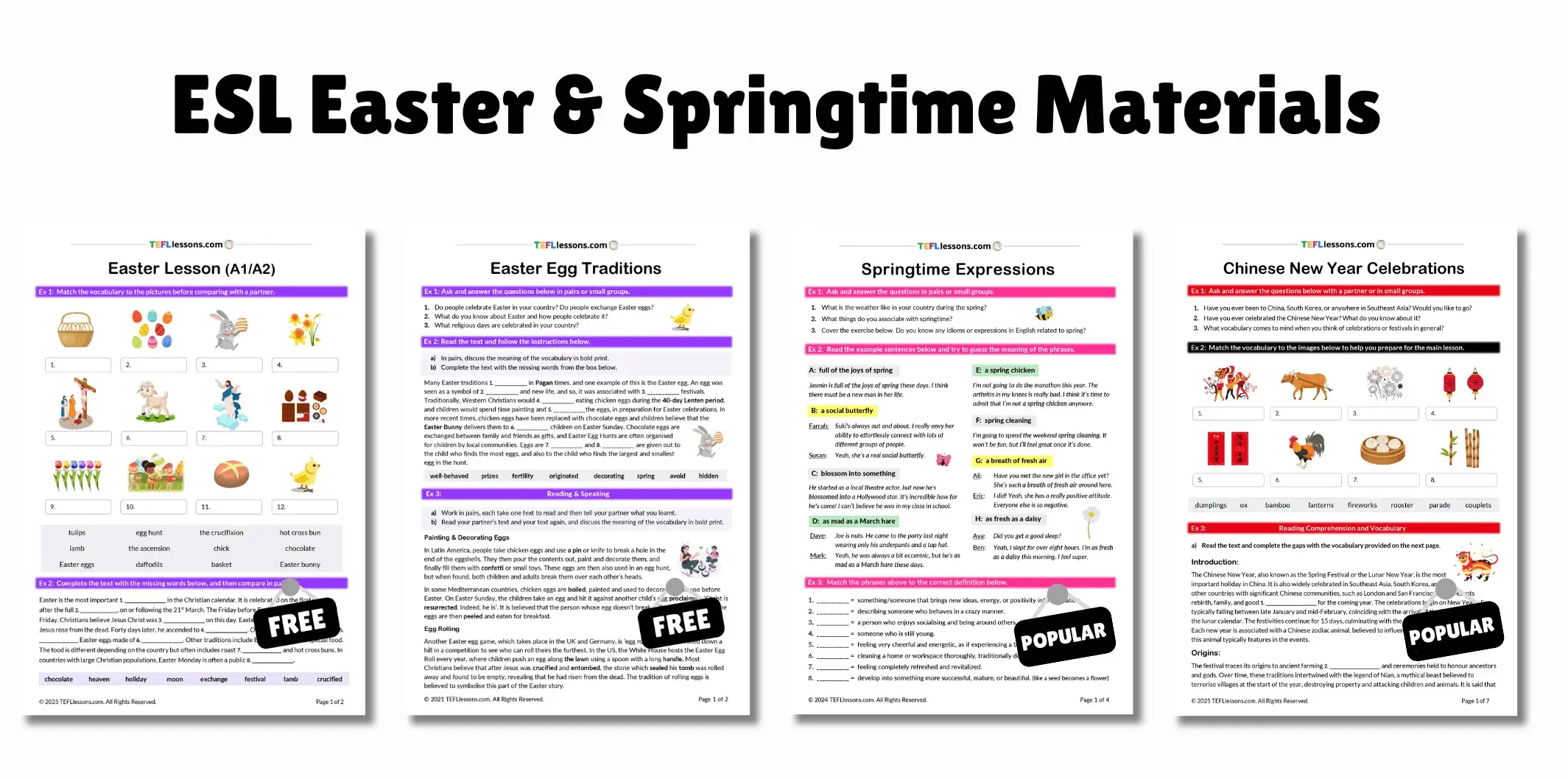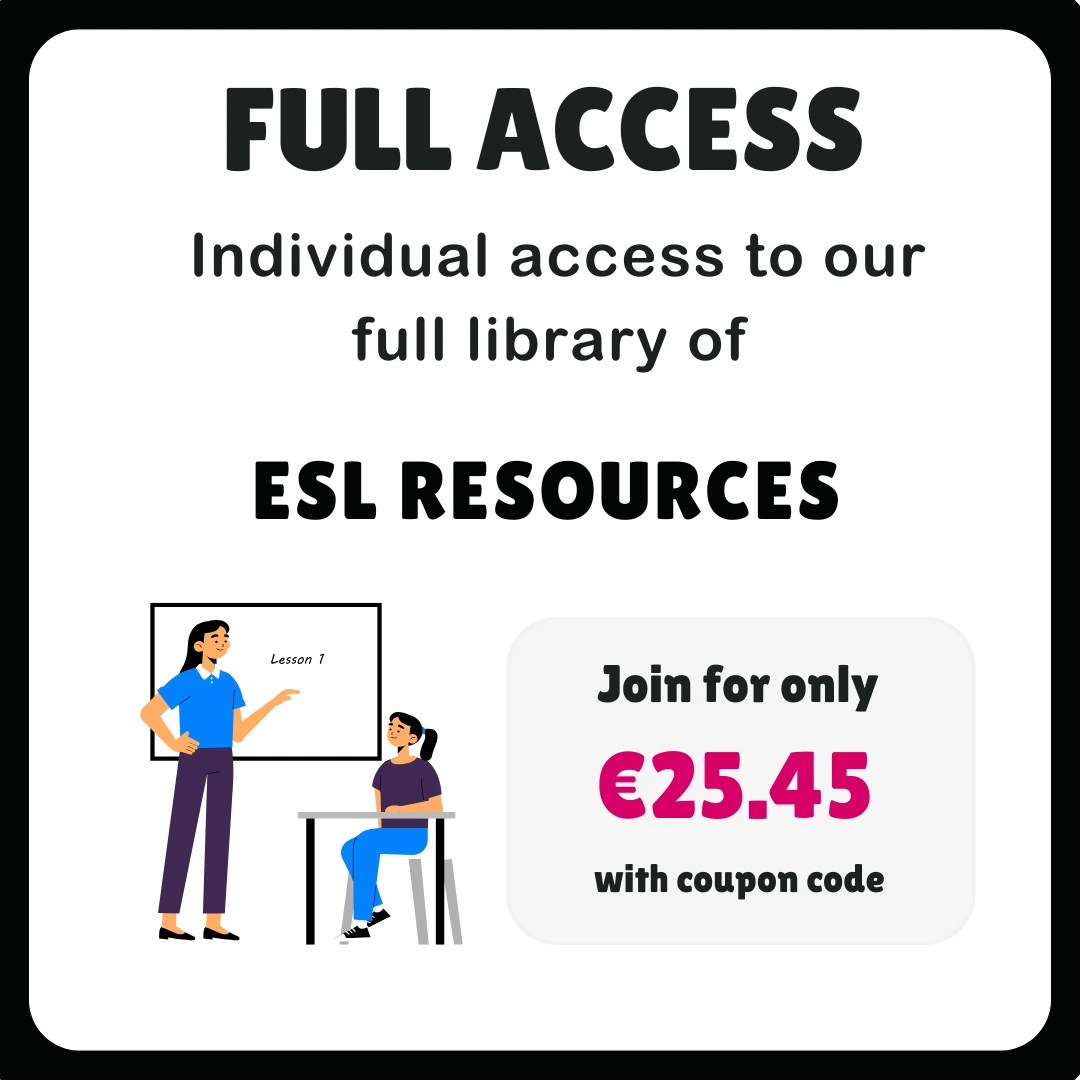When teaching Easter in ESL classrooms, it’s important to approach the topic with creativity and inclusivity. While Easter has religious origins, it’s also widely celebrated as a cultural and seasonal event. Framing it this way helps ensure all learners feel comfortable and included—especially in multicultural classrooms where not everyone may observe the holiday.
For students learning English abroad in a country where Easter is widely celebrated, understanding the customs and vocabulary associated with the holiday can be both useful and engaging. It helps them navigate seasonal events, public holidays, and everyday conversations they may encounter in real-life settings, making the learning experience more relevant and meaningful.
Whether students are studying in English-speaking countries or in their home countries, exploring Easter offers a chance to learn about local customs while practising natural language for describing traditions.
As an ESL educator with over 20 years of experience, I’ve found that incorporating seasonal topics like Easter can significantly enhance learner engagement and promote meaningful communication. Here are some ideas to bring Easter into your ESL classroom in a respectful, inclusive, and language-focused way.
1. Present Easter as a Cultural Touchpoint
Easter blends cultural and religious traditions—celebrated with chocolate eggs, family meals, spring symbols, and public holidays. In English-speaking countries, it’s often a major event on the calendar. However, in diverse classrooms, it’s best to present these traditions neutrally.
Some ESL lessons may include references to Easter’s religious background to help students understand why it’s widely observed. This can be done using factual, inclusive language like “Christians believe…” to provide context while avoiding any sense of promotion.
For example, this free Easter Lesson (A1–A2) explores the origin and customs associated with Easter using accessible language and culturally respectful content. Alternatively, our Easter Egg Reading takes a purely secular approach, focusing on global egg traditions, making it ideal for a wider audience.
Focus on Seasonal Language rather than Religious Themes
Spring is an ideal time to explore fresh, seasonal vocabulary in the ESL classroom. Words and phrases related to growth, renewal, and change often appear in everyday conversation—making them practical and engaging for learners.
For example, our Springtime Expressions lesson introduces students to spring-related idioms and metaphors in a fun, accessible way. It’s a great way to explore language that reflects the season’s energy and symbolism, without focusing on the religious aspects of Easter.
3. Encourage Cross-Cultural Sharing While Teaching Easter in ESL
Holidays offer excellent opportunities for students to share their own traditions and compare how different cultures celebrate this time of year. Some learners may be familiar with Easter, while others might observe Nowruz, Holi, Songkran, or Eid al-Fitr. Encouraging discussion about these festivals helps build cultural awareness and promotes inclusivity.
To expand on this, you might explore global springtime festivals such as the Lunar New Year or Ramadan. Our Chinese New Year ESL Lesson is a great complement to Easter-themed lessons and introduces cultural practices through engaging, structured activities. Discussions about Ramadan and Eid can also provide meaningful comparisons around the themes of renewal, reflection, and celebration.
For broader context, consider referencing a list of spring festivals around the world to support these conversations and help learners connect cultural themes across traditions.
Final Thoughts:
Incorporating Easter into your ESL lessons offers an engaging way to bring language to life. Presenting the religious aspects of Easter in a factual and neutral way, providing opportunities for cultural exchange, and focusing on spring-related vocabulary will create a meaningful learning experience for all students.
We’d Love to Hear from You!
How do you approach seasonal holidays and cultural celebrations in your ESL classroom? Have you used any of the lessons mentioned above, or do you have your own favourite springtime resources? Share your ideas in the comments—we’d love to hear how you make your lessons engaging and inclusive!



